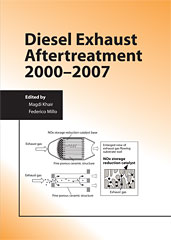Technical Paper
Achieving the 2004 Heavy-Duty Diesel Emissions Using Electronic EGR and a Cerium Based Fuel Borne Catalyst
1997-02-24
970189
The post-1998 diesel engine emissions challenge was put forth in July 1995 by the Statement of Principles (SOP) signed by the manufacturers of heavy duty engines, the U.S. Environmental Protection Agency (EPA) and the California Air Resources Board (CARB). Through this SOP, the signatories agreed to reduce the on-highway diesel engine NOx emissions by 50% from the legislated 1998 4.0 g/bhp.hr to 2.0 g/bhp.hr by the year 2004 with no increase over the 1998 particulate matter legislated level set at 0.1 g/bhp.hr. There are provisions in the SOP for the optional grouping of the gaseous hydrocarbons and NOx, limiting them at a combined value of 2.5 g/bhp.hr with a 0.5 g/bhp.hr hydrocarbon limit. In North America, particulate matter emissions standards were first imposed on heavy duty diesel engines in 1988. Since then, the NOx and particulate matter were balanced by taking advantage of the trade-off between the two pollutants inherent in diesel engines.

